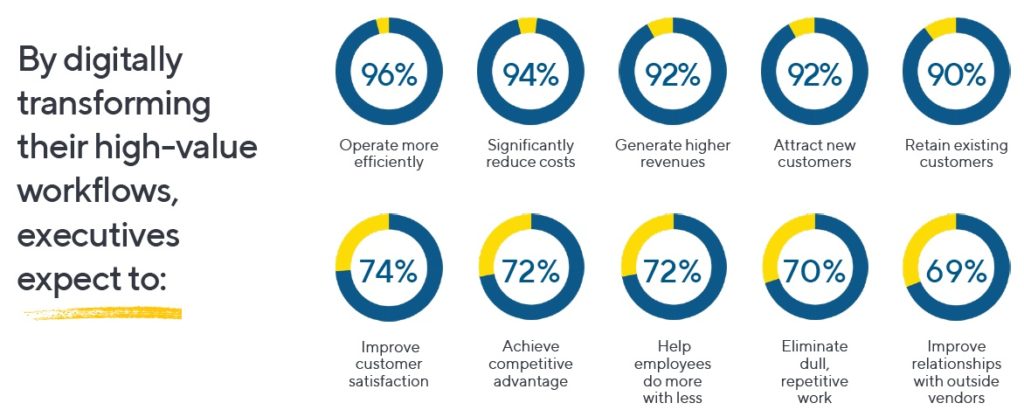“There is a growing desire to create computer systems that can communicate effectively to collaborate with humans on complex, open-ended activities.” This is from Hallmarks of Human-Machine Collaboration: A framework for assessment in the DARPA Communicating with Computers Program
Case in point, a couple of years ago, I spoke to the head of an asset management firm in Hong Kong. While we initially communicated via LinkedIn, we eventually moved to email to lock the appointments. It was during this stage of the appointment setting that his assistant reached out to get my confirmation. It turns out the assistant was a ‘bot’ that somehow coordinated the executive’s schedule for him.
Human-machine collaboration is not new but the emergence of new technologies and learnings from past implementations are drawing renewed interest in what is possible. For instance, Using Google Duplex, Google Assistant can be used (in the US and select markets around the world) to make reservations using a voice indistinguishable from a human.
Get back to work
Within the realm of the enterprise, the convergence of advances in artificial intelligence, Natural Language Processing (NLP), cognitive agents, Machine Learning (ML), and predictive analytics are bringing new levels of capabilities to traditional robotic process automation.
Russel Vaitha, director of consulting services at Hitachi Vantara, says these innovations are finding their way into processes to help understand and interpret unstructured and semi-structured data such as emails, complex documents, call centre transcripts, and social media metadata, and many more advanced use cases.
Business-specific benefits of intelligent automation
The Kofax 2022 Intelligent Automation Benchmark Study noted that business leaders (it surveyed) are looking to put intelligent automation across a wide swath of business processes including transaction processing (84%), bank statement processing (82%), document security management (82%), invoice automation (82%), and onboarding (78%) to name a few.

Source: Kofax 2022, Intelligent Automation Benchmark Study

“By applying intelligent automation, organisations can augment current processes, reduce expenses and appoint human resources to higher-value tasks, increased productivity and cost savings,” said David Chan, managing director at Adnovum Singapore.
“By anticipating business outcomes, organisations can facilitate their business strategies to enhance consumer satisfaction, ultimately boosting their bottom line.”
David Chan
Chris Hausler, director of machine learning at Zendesk, says intelligent automation bots are extremely valuable for improving efficiencies and lowering costs, as they allow for repetitive tasks to be delegated.
Using the contact centre operation as a use case, he says there is an opportunity to apply AI to millions of tickets to quickly understand larger issues and take pre-emptive measures to address the root cause.
“As customers are increasingly demanding control over their conversations with the business, companies must leverage self-service and automation to deliver friction-free customer experiences to deliver on that demand,” he added.
The long road ahead
Implementing any new technology in an existing environment is not easy. Gallup says more than 70% of change initiatives fail.
Vaitha warns that many organisations are unsure where to begin or how to implement intelligent automation solutions. He recommends organisations carefully consider the return on investment before implementing solutions.
Hausler says as industries undergo transformation, they will face challenges like increased data complexity and a lack of technical expertise. He acknowledges the difficulty of keeping up, particularly as a lot of specialised knowledge is required for integration and implementation at an enterprise level.
For Chan, the efficacy of AI/ML solutions depends on having high-quality data, appropriate tools and methodologies to manage for further insights. He warns that many AI/ML integrations fail due to the lack of access to such data, a problem that stems from bad data management practices.
How far will you trust a machine?
FutureCIO has long straddled the issue of how much humans can trust machines, particularly for critical systems and processes. While humans may trust certain repetitive tasks to a bot, there is yet little evidence to suggest that humans are ready to let machines do all the thinking.
Perhaps the memory of HAL 9000 of the 2001: A Space Odyssey movie.

Hitachi’s Vaitha believes that a digital workforce or bots can help humans make better decisions by providing more data and identifying patterns and trends that humans may not be able to discern. He posits that collaborative intelligence can also improve the efficiency of tasks carried out by humans.
“Collaboration and trust between humans and AI can help create new opportunities to develop new products and services.”
Russel Vaitha
Zendesk’s Hausler offers a caveat to building this trust. He explains that the foundation of trust in AI lies in high-quality data that is timely, tangible, and accurate, which will minimise margins of error when developing data models that are integral to the automation process.
“When the data sets are consistently reliable, it builds trust in the performance and assurance that the technical process will always deliver results in the way it’s intended to,” he opined.
We also need to ensure privacy and data rights are also enforced, so customers can feel assured when sharing important data. When organisations respect their customers’ privacy, it strengthens the relationship and will undoubtedly build trust.
Strict ethical policies also need to be in place when applying AI and automation, and solutions need to be grounded in human-centric policies that are ethically sound.
Chan says business leaders need to pave a path of least resistance from their existing workforce, help them embrace automation and learn to work effectively alongside their digital counterparts.
He believed this can be done by conveying the value of automation to the workforce, helping them build technical skillsets to help them stay relevant and transition them into roles where leadership, critical thinking and adaptability are required.
Ensuring scalable and long-term success
The Kofax 2022 Intelligent Automation Benchmark Study noted that executives accept there are hurdles to overcome in automating their high-value workflows. They anticipate challenges ahead especially in harnessing existing systems and data to fuel their automation.

Sources: Kofax 2022, Intelligent Automation Benchmark Study
Vaitha says the first step is establishing clear business objectives. Clearing this will make it easier to select the right tools and technologies to achieve long-term success.
Chan believes that adopting intelligent automation is not a one-time process. Effective AI/ML solutions need to be scalable, purpose-built, and adaptable to business uncertainties.
“After adoption, organisations will need to continuously measure the effectiveness of the solution, make regular improvements and ensure it continues to meet the set KPIs,” he added.

Hausler acknowledges the importance of taking a focused approach to implementation but cautions not to bite off more than one can chew. He adds that it is important to look at automation as a tool to solve very specific problems and elements before it can be scaled up to different applications. This allows room for learning through trial and error, which results in best practices emerging.
“Automation and AI are game-changers when it comes to business transformation, and organisations need to look beyond these technologies as mere stop-gap measures.”
Chris Hausler
“When organisations understand that these solutions will fundamentally change the way your business operates, their business strategies will adapt accordingly, resulting in success,” he concluded.





